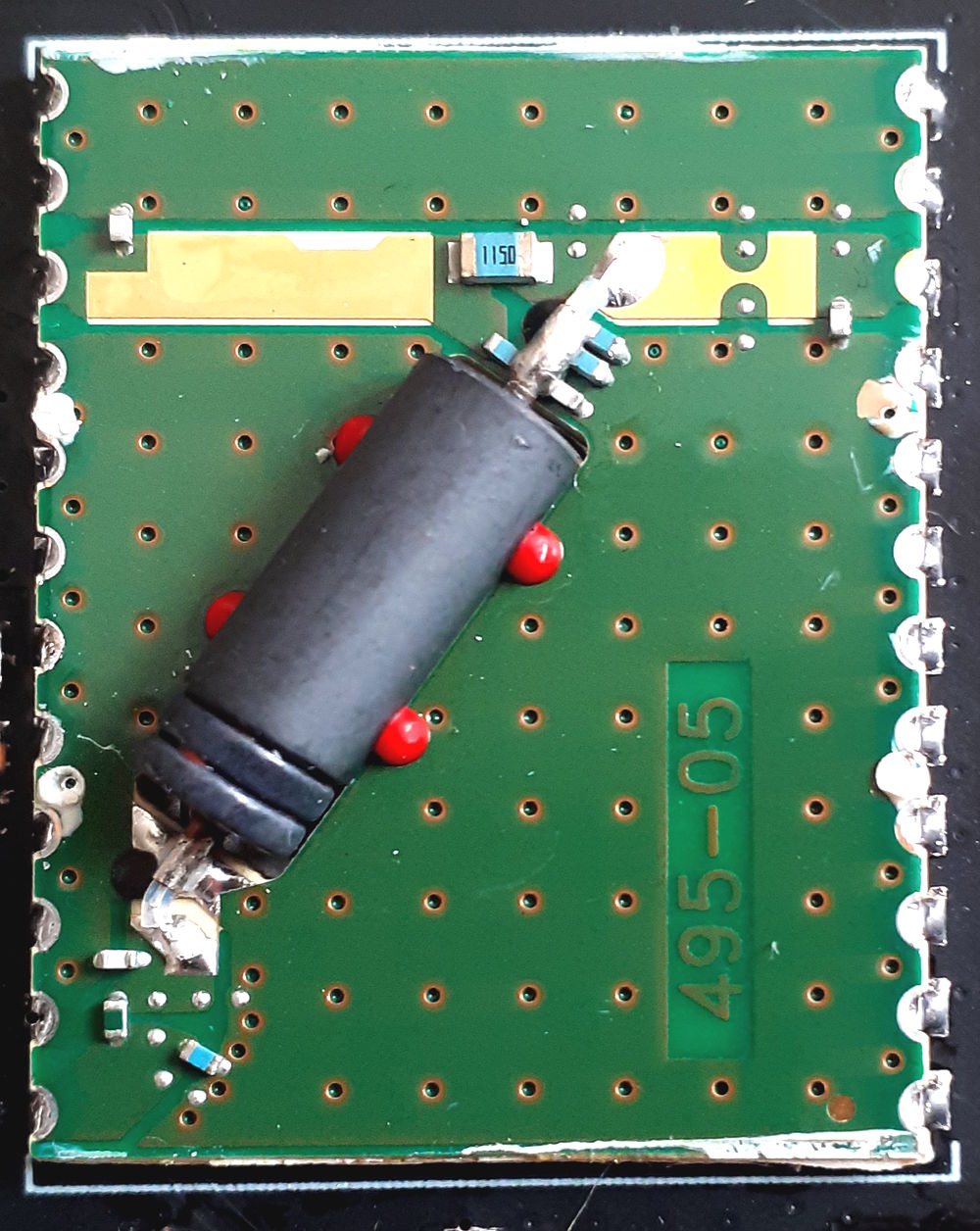I've bought a few 50MHz-6GHz directional couplers (SEDC-10-63+,) each for 75$. Here is a picture of this expensive coupler:
Unfortunately one of these couplers was not working from the beginning so I decided to take the cover off and get a glimpse of the insides.
The problem is I cannot understand what this big black component is (probably a ferrite,) what it does, and how it contributes to the coupling or directivity.
I also wondering if the cover is anything more than a simple cover. The top cover feels like a plastic but sounds like a ceramic object.
Coupler Inside
Cover
Update 1
What does this 1150 component do? connect output to the coupled port? Doesn't this decrease the directivity?











